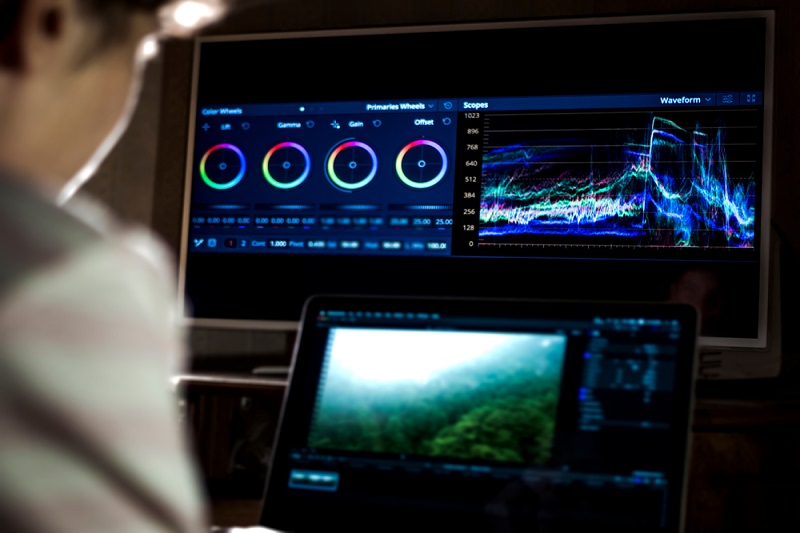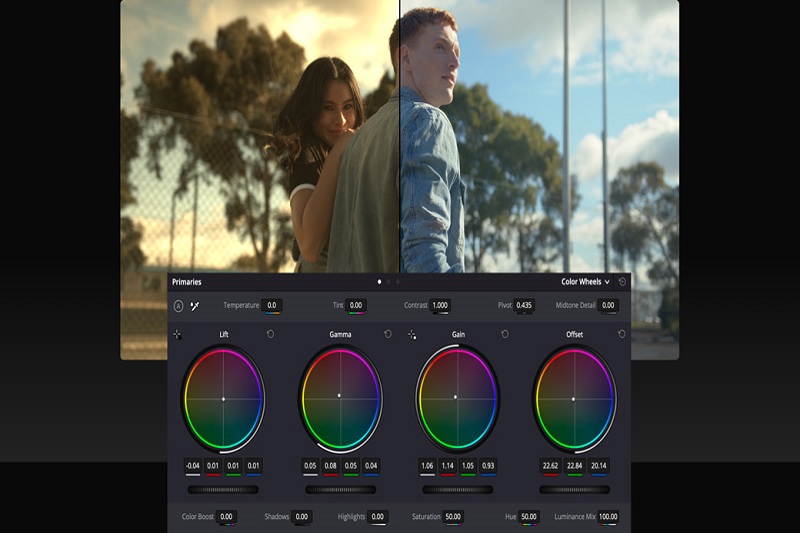Have you ever watched a movie or a TV show and felt transported into the world portrayed on the screen? From the breathtaking hues of a gorgeous sunset to the eerie shadows in a dark alleyway, the colours we see on screen evoke powerful emotions and create an immersive experience. One of the key components in achieving this is the art of colour grading. In this article, we will delve into the world of colour grading and explore the importance of colour theory, the role of a colour grader, and the tools and techniques used to create visual emotions in filmmaking.

Understanding Colour Theory
The Psychology of Colour
Colours have the power to evoke emotions and influence our mood. Studies have shown that colours can trigger specific psychological responses, which is why colour theory is a vital aspect of colour grading. For instance, red is often associated with passion and intensity, while blue is considered calming and peaceful. Colour theory examines the relationships between colours and the emotions they evoke, allowing colour graders to create visual experiences that resonate with the viewer.
Colour Harmonies
To create a visually appealing and emotionally impactful scene, colour graders must understand colour harmonies. These are combinations of colours that work well together and create a sense of balance and unity in a composition. Some common colour harmonies include:
Complementary colours:
Colours that are opposite each other on the colour wheel, such as red and green or blue and orange.
Analogous colours:
Colours that are adjacent to each other on the colour wheel, such as red, orange, and yellow.
Triadic colours:
Three colours evenly spaced around the colour wheel, such as red, yellow, and blue.
By using these harmonies, colour graders can create visually engaging scenes that evoke the desired emotions.
Colour Temperature
Colour temperature refers to the warmth or coolness of a colour and is measured in Kelvin (K). In filmmaking, colour temperature is crucial in setting the mood and tone of a scene. For example, a warm colour temperature (around 3000K) can create a cozy, inviting atmosphere, while a cool colour temperature (around 5000K) can evoke a sense of coldness and isolation. Understanding and manipulating colour temperature is a key skill for colour graders.

The Art of Colour Grading
The Role of a Colour Grader
A colour grader, also known as a colourist, is a professional responsible for adjusting the colours and tones of a film or video to create a desired mood, tone, or visual style. This is achieved through a combination of colour correction and colour grading. The colour grader works closely with the director and cinematographer to ensure that the final product aligns with the creative vision of the project.
Colour Correction vs. Colour Grading
Colour correction and colour grading are often used interchangeably, but they have distinct functions in the filmmaking process:
Colour correction:
This is the process of balancing the colours and tones in a scene to ensure consistency and accuracy. Colour correction involves adjusting exposure, contrast, white balance, and other technical aspects to create a neutral and accurate starting point for colour grading.
Colour grading:
This is the creative process of manipulating colours and tones to evoke specific emotions, create visual continuity, and establish a unique visual style. Colour grading can involve adjusting the overall colour balance, enhancing or muting specific colours, creating colour harmonies, and more.
Colour Grading Techniques
There are various techniques that colour graders use to achieve the desired visual effects. Some of these techniques include:
Primary colour grading:
Adjusting the overall colour balance and tonal range of an image.
Secondary colour grading:
Targeting specific colours or areas of an image for adjustments, such as skin tones, skies, or clothing.
Masking and tracking:
Isolating specific areas or objects in a scene for independent colour adjustments.
Look development:
Creating unique colour palettes and tonal styles to convey specific moods or visual themes.
Colour Grading Software and Tools
Colour graders rely on specialized software and tools to perform their work. Some popular colour grading software programs include:
DaVinci Resolve:
A professional colour grading and video editing software that offers a comprehensive set of colour grading tools, including primary and secondary colour grading, masking, tracking, and more.
Adobe Premiere Pro:
A popular video editing software that includes basic colour grading tools, such as colour balance, exposure, contrast, and hue adjustments.
Avid Media Composer:
A professional video editing software that offers advanced colour grading features, such as secondary colour grading, masking, and tracking.
In addition to these software programs, colour graders may also use dedicated colour grading hardware, such as control panels and colour grading monitors, to enhance their workflow and achieve more precise results.
Conclusion
Colour grading is a critical aspect of filmmaking that has the power to evoke visual emotions and immerse the audience in the story. By understanding colour theory and mastering the art of colour grading, colour graders can create visually stunning and emotionally impactful films and videos. Whether you are a filmmaker looking to enhance your projects or a viewer who appreciates the beauty of well-crafted visual storytelling, colour grading is an essential component of the cinematic experience.

